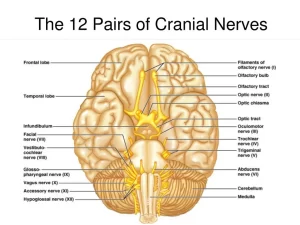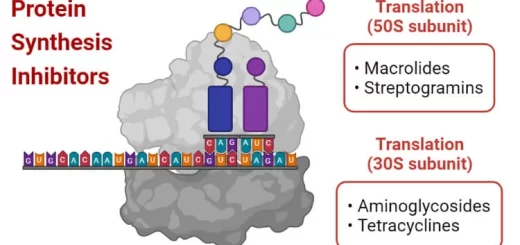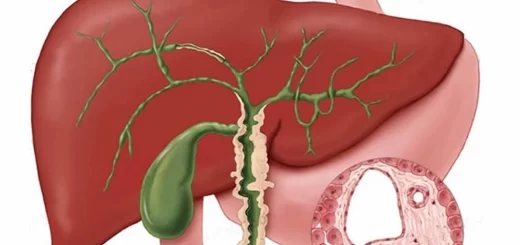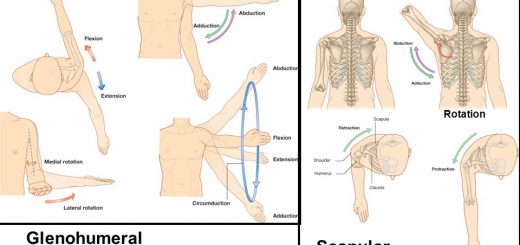Cranial nerves anatomy, function, Olfactory, Optic, Oculomotor, Trochlear, Trigeminal and Abducent
The cranial nerves arise directly from the brain (including the brainstem), they emerge from the central nervous system above the level of the first vertebrae of the vertebral column, They are 12 pairs of nerves that can be seen on the ventral (bottom) surface of the brain, they bring information from the sense organs to the brain, and they control muscles; they are connected to glands or internal organs such as the heart and lungs.
Anatomy of the cranial nerves
The cranial nerves are named as follows:
- Olfactory
- Optic
- Oculomotor
- Trochlear
- Trigeminal
- Abducent
- Facial
- Vestibulocochlear
- Glossopharyngeal
- Vagus
- Accessory
- Hypoglossal
The olfactory, optic, and vestibulocochlear nerves are entirely sensory, the oculomotor, trochlear, abducent, accessory, and hypoglossal nerves are entirely motor and the remaining nerves are mixed.
1. Olfactory nerve
The olfactory nerves arise from the olfactory neurons in the olfactory mucous membrane, Bundles of these olfactory nerve fibers pass through the openings of the cribriform plate of the ethmoid bone to enter the olfactory bulb in the cranial cavity, The olfactory bulb is connected to the olfactory area of the cerebral cortex by the olfactory tract.
2. Optic nerve
- The optic nerve consists of the axons of the cells of the ganglionic layer of the retina.
- The optic nerve emerges from the back of the eyeball and leaves the orbital cavity through the optic canal to enter the cranial cavity.
- The optic nerve then unites with the optic nerve of the opposite side to form the optic chiasma.
- In the chiasma, the fibers from the medial half of each retina cross the midline and enter the optic tract of the opposite side, whereas the fibers from the lateral half of each retina pass in the optic tract of the same side.
- Most of the fibers of the optic tract terminate by synapsing with the nerve cells in the lateral geniculate body.
- The axons of the nerve cells of the lateral geniculate body pass posteriorly as the optic radiation and terminate in the visual cortex of the cerebral hemisphere.
3. Oculomotor nerve
The oculomotor nerve emerges on the anterior surface of the midbrain, It then continues into the middle cranial fossa in the lateral wall of the cavernous sinus, Here, it divides into a superior and an inferior division, which enters the orbital cavity through the superior orbital fissure, The oculomotor nerve supplies the following:
- The extrinsic-muscles of the eye: the levator palpebrae superioris, the superior rectus, the medial rectus, the inferior rectus, and inferior oblique.
- The intrinsic muscles of the eye: the constrictor pupillae of the iris and the ciliary muscles are supplied by the parasympathetic component of the oculomotor nerve, These fibers synapse in the ciliary ganglion and reach the eyeball in the short ciliary nerves.
The oculomotor nerve is entirely motor, It is responsible for lifting the upper eyelid; turning the eye upward, downward, and medially; constricting the pupil; and accommodation of the eye.
4. Trochlear nerve
- The trochlear nerve is the most slender of the cranial nerves, Having crossed the nerve of the opposite side, it leaves the posterior surface of the midbrain.
- It then passes forward through the middle cranial fossa in the lateral wall of the cavernous sinus and enters the orbit through the superior orbital fissure.
- The trochlear nerve supplies the superior oblique muscle of the eyeball.
- The trochlear nerve is entirely motor and assists in turning the eye downward and laterally.
5. Trigeminal nerve
- The trigeminal nerve is the largest cranial nerve.
- It leaves the anterior aspect of the pons as a small motor root and a large sensory root.
- The large sensory root expands to form the trigeminal ganglion.
- The ophthalmic (V1), maxillary (V2), and mandibular (V3) nerves arise from the anterior border of the ganglion.
Ophthalmic nerve (V1)
The ophthalmic nerve is purely sensory, It runs forward in the lateral wall of the cavernous sinus in the middle cranial fossa and divides into three branches, the lacrimal, frontal, and nasociliary nerves, which enter the orbital cavity through the superior orbital fissure.
Branches of the ophthalmic nerve
- The lacrimal nerve: enters the lacrimal gland and gives branches to the conjunctiva and the skin of the upper eyelid.
- The frontal nerve divides into the supraorbital and supratrochlear nerves, These nerves leave the orbital cavity to supply the skin of the forehead and the scalp.
- The nasociliary nerve continues as the anterior ethmoidal nerve that gives off two internal nasal branches and it then supplies the skin of the tip of the nose with the external nasal nerve.
The branches of the nasociliary nerve are:
- Sensory fibers to the ciliary ganglion
- Long ciliary nerves that contain sympathetic fibers to the dilator pupillae muscle and sensory fibers to the cornea.
- The infratrochlear nerve that supplies the skin of the eyelids.
- The posterior ethmoidal nerve that is sensory to the ethmoid and sphenoid sinuses.
Maxillary Herve (V2)
- The maxillary nerve arises from the trigeminal ganglion in the middle cranial fossa, It passes forward in the lateral wall of the cavernous sinus and leaves the skull through the foramen rotundum, and crosses the pterygopalatine fossa to enter the orbit through the inferior orbital fissure.
- It then continues as the infraorbital nerve in the groove, and it emerges on the face through the infraorbital foramen, It gives sensory fibers to the skin of the face and the side of the nose.
Branches of the maxillary nerve
- Meningeal branches.
- Zygomatic branch, which divides into the zygomatico-temporal and the zygomatic facial nerves that supply the skin of the face, The zygomatico-temporal branch gives parasympathetic secretomotor fibers to the lacrimal gland via the lacrimal nerve
- Ganglionic branches that suspend the pterygopalatine ganglion in the pterygopalatine fossa, They contain sensory fibers that have passed through the ganglion from the nose, the palate, and the pharynx, They also contain postganglionic parasympathetic fibers that are going to the lacrimal gland.
- Posterior superior alveolar nerve, which supplies the maxillary sinus as well as the upper molar teeth and adjoining parts of the gum and the cheek.
- Middle superior alveolar nerve, which supplies the maxillary sinus as well as the upper premolar teeth, the gums, and the cheek.
- Anterior superior alveolar nerve, which supplies the maxillary sinus as well as the upper canine and the incisor teeth.
- Terminal branches palpebral, nasal and labial.
Mandibular nerve (V3)
The mandibular nerve is both motor and sensory, it is the largest division of the trigeminal nerve formed of a large sensory and a small motor root, The sensory root leaves the trigeminal ganglion and passes out of the skull through the foramen ovale to enter the infratemporal fossa.
The motor root of the trigeminal nerve also leaves the skull through the foramen ovale and joins the sensory root to form the trunk of the mandibular nerve, The trunk then divides into a small anterior and a large posterior division.
Branches from the main trunk of the mandibular nerve
- Meningeal branch.
- Nerve to the medial pterygoid muscle, which supplies not only the medial pterygoid but also the tensor palati and tensor tympani muscles.
Branches from the anterior division of the mandibular nerve
- Masseteric nerve to the masseter muscle.
- Deep temporal nerves to the temporalis muscle.
- Nerve to the lateral pterygoid muscle.
- Buccal narve to the skin and the mucous membrane of the cheek, The buccal nerve does not supply the buccinator muscle (which is supplied by the facial nerve), and it is the only sensory branch of the anterior division of the mandibular nerve.
Branches from the posterior division of the mandibular nerve
1. Auriculo-temporal nerve passes backwards deep to the neck of the mandible to enter the parotid gland and leaves the gland through the upper end, It supplies the skin of the auricle, the external auditory meatus, the temporo-mandibular joint, and the scalp, This nerve also conveys postganglionic parasympathetic secretomotor fibers from the otic ganglion to the parotid salivary gland.
2. Lingual nerve, it is joined by the chorda tympani nerve, and descends between the ramus of the mandible and medial pterygoid muscle, It reaches the floor of the mouth by passing on the medial side of the 3rd molar tooth (dangerous position) and it supplies the mucous membrane of the anterior two-thirds of the tongue and the floor of the mouth, It also gives off preganglionic parasympathetic secretomotor fibers to the submandibular ganglion.
3. Inferior alveolar nerve, runs with the inferior alveolar vessels (behind the lingual nerve) to reach the mandibular foramen and enters the mandibular canal to supply the teeth of the lower jaw and emerges through the mental foramen (mental nerve) to supply the skin of the chin, Before entering the canal, it gives off the mylohyoid nerve, which supplies the mylohyoid muscle and the anterior belly of the digastric muscle, The branches of the posterior division of the mandibular nerve are sensory (except the nerve to the mylohyoid muscle).
6. Abducent nerve
This small nerve emerges from the anterior surface of the brainstem between the pons and the medulla oblongata, It passes forward with the internal carotid artery through the cavernous sinus in the middle cranial fossa and enters the orbit through the superior orbital fissure, The abducent nerve supplies the lateral rectus muscle and is therefore responsible for turning the eye laterally.
You can subscribe to science online on YouTube from this link: Science Online
You can download the Science Online application on Google Play from this link: Science Online Apps on Google Play
Cranial nerves types, Facial, Vestibulocochlear, Glossopharyngeal, Vagus, Accessory & Hypoglossal
Triangles of the neck contents, Structure of Anterior and Posterior triangle of the neck
Facial muscles function, anatomy, arteries, veins, names & expressions
Skull function, anatomy, structure, views & Criteria of neonatal skull
Anatomy of the circulatory system, Vascular system, Arteries of head and neck




